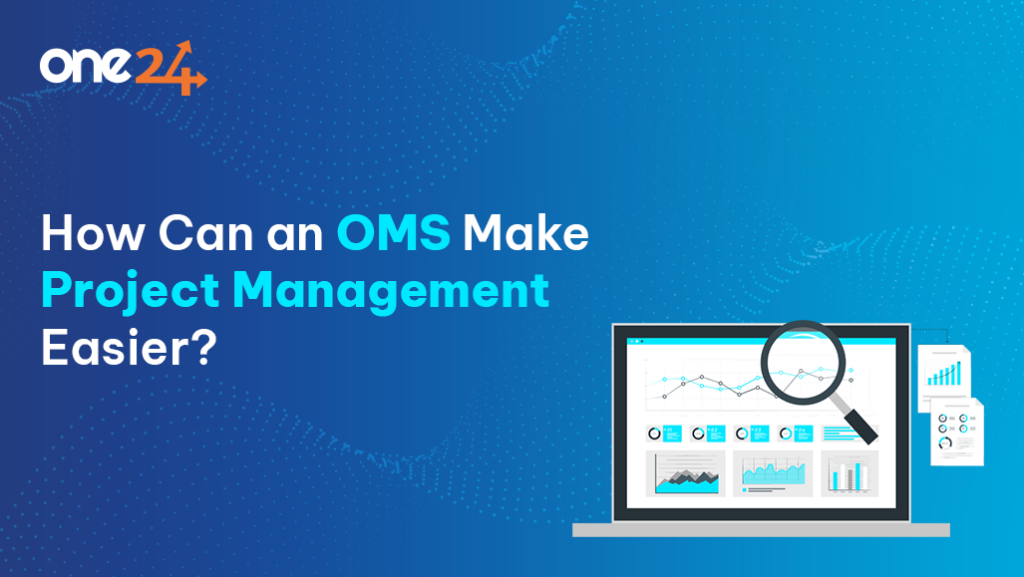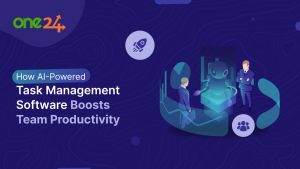Success in IT project management depends critically on accuracy, efficiency, and smooth teamwork. Presenting the Organizational Management System (OMS), an innovative instrument aimed at transforming the management practices of IT enterprises. An OMS like One24 expands its capabilities to improve team cooperation, expedite project workflows, and guarantee on-time and budget delivery. It is traditionally related to order and inventory management. This article examines project management in IT organizations, outlining both its major advantages and usefulness.

Understanding the Role of an OMS in IT Project Management
An Organizational Management System serves as the backbone of project management within IT companies by centralizing and automating critical processes. It integrates various facets of project execution, including resource allocation, task management, communication channels, and performance tracking. Unlike traditional project management tools that focus on specific aspects like task lists or communication platforms, an OMS offers a holistic approach, consolidating data and operations into a unified platform.
Key Benefits of Using an OMS in IT Project Management
1. Centralized Data Management
One of the primary advantages of an OMS is its ability to centralize data management. In IT project management, where multiple teams and stakeholders collaborate on complex projects, having a single source of truth for project-related information is invaluable. An OMS creates a single dashboard by combining data from several departments and processes, including development, testing, and deployment. Project managers can now make well-informed decisions based on up-to-date data thanks to this centralized view, which improves accountability and transparency throughout the entire organization.
2. Simplified Procedures
In the highly competitive field of IT project management, where outputs are frequently interconnected, efficiency is crucial. By automating repetitive operations and workflows, an OMS lowers the chance of human mistakes and manual labor. For example, without continual manual intervention, automated job allocations, status updates, and notifications guarantee that team members remain informed and in sync. By taking a more efficient approach, teams can expedite project timeframes and concentrate on activities that provide value instead of handling administrative duties.
3. Improved Cooperation
The foundation of any successful IT project is collaboration. With the help of centralized communication channels, document-sharing options, and real-time project updates, an OMS makes collaboration and communication easy. Team members don’t need to switch between different platforms or applications to collaborate on assignments, share insights, and monitor progress. Additionally, the openness provided by an OMS encourages a collaborative culture because participants from all departments can offer their knowledge and perspectives, stimulating creativity and problem-solving.
4. Optimization of Resources
In IT project management, where the availability of technical and professional labor can affect project outcomes, effective resource management is essential. Visibility into capacity planning, task distribution, and resource allocation is provided by an OMS. By allocating resources according to current demand and availability, project managers may guarantee optimal resource usage and prevent bottlenecks. This proactive approach reduces resource conflicts and increases team productivity in addition to increasing project efficiency.
5. Real-Time Analytics and Reporting
In IT firms, data-driven decision-making is crucial to the success of projects. Managers may monitor project health, detect possible hazards or opportunities in real-time, and measure key performance indicators (KPIs) with the use of an OMS’s powerful analytics and reporting features. Stakeholders may make educated decisions and timely course corrections by gaining insights into project progress, budget adherence, and resource use through customizable dashboards and reports.
6. Flexibility and Scalability
IT projects frequently change, necessitating scalable and agile solutions. An OMS can adapt to changes in the scope, team size, or technology as it develops. It is made to scale with the needs of the project. An OMS ensures continuity and consistency in management processes by adapting to suit changing needs, whether managing a small-scale project or a large-scale business initiative. Because of its adaptability, IT firms can integrate new tools or modules, alter workflows, and match corporate objectives with the procedures.
7. Security and Compliance
Data security and regulatory norm compliance are non-negotiable in the IT industry. By guaranteeing adherence to internal policies and industry-specific requirements, an OMS assists IT firms in maintaining compliance. To protect critical project data and reduce cybersecurity threats, it offers strong security features like role-based access controls, data encryption, and audit trails. An OMS boosts company credibility and inspires confidence among stakeholders by upholding compliance requirements and preserving data integrity.

Implementation Advice: How to Begin Using an OMS
Thorough planning and implementation are necessary when integrating an OMS into your IT project management system. The following implementation advice can help you get the most out of an OMS:
- Determine Your Requirements: Determine the precise issues and goals that an OMS can help with, including boosting resource management, expediting project schedules, or fostering better teamwork.
- Select the Appropriate OMS: Choose an OMS based on the size, industry standards, and scalability requirements of your company. Take into account elements like user interface suitability, customization choices, and integration capabilities.
- Work Together Across Teams: Engage important parties in the implementation process, such as project managers, IT managers, and end users. Encourage cooperation and solicit input to make sure the OMS satisfies the various needs of your company.
- Provide Training and Support: Invest in thorough training programs to acquaint users with the features and functionalities of the OMS. Provide Training and Support. Provide resources and continuing assistance to answer queries, maximize utilization, and encourage adoption within the company.
- Watch and Adjust: Keep an eye on the OMS’s performance at all times, check user input, and make incremental changes in response to changing project specifications and corporate objectives.
Putting an End to Complex Project Management
For IT firms looking to improve their project management skills, an Organizational Management System (OMS) is a game-changing tool. IT project managers may deliver projects more effectively, reduce risks, and stimulate innovation with the help of an OMS, which centralizes data, automates workflows, fosters collaboration, and offers real-time insights.
People Also Ask
1. In project management, what does an OMS mean?
An organizational management system is a software platform that unifies and automates a range of project-related tasks, including communication, resource allocation, task management, and reporting.
2. How are project workflows streamlined by an OMS?
Routine processes including task assignment, status updates, and notifications are automated by an OMS to minimize errors and reduce manual labor. It offers a centralized platform that enables team members to work together efficiently and access project data in real-time, resulting in more efficient workflow management.
3. What advantages might an OMS offer project managers?
By centralizing data management, streamlining resource allocation, and offering real-time analytics and reporting, using an OMS improves efficiency. It guarantees better decision-making through data-driven insights, fosters team member cooperation, and allows for scalability as project requirements change.
4. How can an OMS enhance project teams’ ability to collaborate?
By providing centralized channels for communication, the ability to share documents, and real-time project updates, an OMS makes collaboration easier. It encourages openness across teams, facilitating easy coordination and agreement on objectives and tasks for the project.
5. Can an OMS assist with project resource management?
Yes, by offering visibility into resource availability, workload distribution, and capacity planning, an OMS aids in the optimization of resource management. Based on real-time data, project managers may deploy resources efficiently, guaranteeing optimal resource use and preventing bottlenecks.
6. How does an OMS help project managers make better decisions?
Project managers may monitor key performance indicators (KPIs), follow project progress, and spot any hazards or opportunities with the help of an OMS’s extensive analytics and reporting options. Proactive management of project results and well-informed decision-making are made possible by this data-driven methodology.
7. Is an OMS appropriate for methods of agile project management?
It is true that an OMS that facilitates sprint planning, iterative development cycles, and dynamic teamwork can be adjusted to fit agile project management methodologies. Enabling swift modifications to project scope, priorities, and resource allocation in accordance with agile approaches, improves agility.
8. What protections for project data does an OMS provide?
Strong security features including data encryption, audit trails, role-based access restrictions, and industry-standard compliance are often included in an OMS. By guaranteeing data confidentiality, integrity, and defense against cybersecurity attacks, these elements uphold confidence and adhere to legal and regulatory standards.
9. How adaptable is an OMS to the demands of expanding projects?
Scalable design allows an OMS to adapt to the changing requirements of expanding projects or organizations. By enabling workflow modification, integrating extra modules or tools, and scaling up resources as project requirements grow, it promotes scalability.
10. How can I begin putting an OMS for project management into practice?
To begin implementing an OMS, evaluate the project management requirements of your company. Select an appropriate OMS solution based on features and scalability, involve important stakeholders in the process, give users sufficient training and support, and track performance to make iterative improvements as needed.






